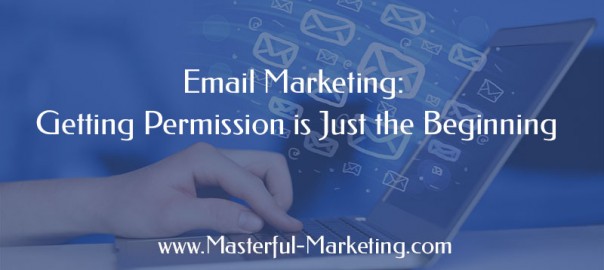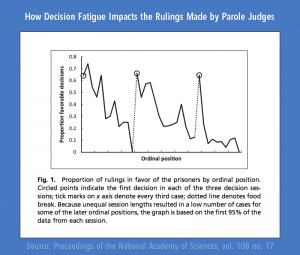
People understand the value of having an in-house email list, but many small businesses haven’t started building their list or planning their email marketing strategy. Remember that there are only two things a business owns in the online world – your website and your email list. All other instances of your brand – social media profiles or business listings – are rental space. At any time and for any reason, these can disappear.
As the foundation of your content marketing strategy, building an email list is the process of generating quality inbound leads by providing content that helps your target audience through the buying process. This activity is extremely important to your online marketing and should be high on your list of strategies to pursue.
But once you have started generating quality leads and building a solid opt-in email list, you need a plan on how to communicate with them and what you can offer that is of value. Having people sign up for your list and then never connecting with them helps them to forget you. Then when you do send them an email, most won’t remember why they are on your list.
Four types of email marketing campaigns
There are different types of emails that you can send to your list, but for most small businesses, these following are the most useful:
- Dedicated emails
- Educational blog posts
- Email newsletters
- Lead nurturing
Depending on the goal of building your email list, you may end up using one or all of these at some point. The key is to segment your list based on interests and send only relevant correspondence.
Single topic email with strong call to action
Most businesses use dedicated emails to announce a a new product or an event. They are popular because they take less planning, are easy to set up, focus on one topic and include a strong call to action.
Examples of where you can use these include:
- Letting past event attendees know of upcoming events.
- Greeting new members of your community with a welcome email
- Generating interest in a new product or service
- Announcing a special to loyal customers
Use these sparingly since they are more promotional than educational but they have their place in your communication strategy.
Offer value to your audience
Blogging regularly as part of your content marketing effort can help attract strangers to your website and turn them into leads. If optimized properly, your blog posts are a great way to drive traffic to your website and increase the trust and authority of your brand.
When people come to your blog via a search, provide an offer to get them to sign up for your email list to receive your posts via email. As long as your posts are educational and informative, and not all about your business, it is an easy way to stay in touch.
Note: One of the reasons I recommend and use MailChimp is because of their RSS campaigns. When you publish your post, it gets sent via email to your list. Not all email service providers offer this feature.
Educate and entertain regularly
An email newsletter is a great way to stay in touch with your list and help you build strong relationships with your readers. Delivered on a consistent basis, your newsletter can take many forms:
- Educational or entertaining content (or both). This one takes the most time to create. A great example of one that is both entertaining and educational is the biweekly newsletter from Michael Katz of Blue Penguin Development.
- Digest of interesting posts from other sources. This is easier to produce but less personal as you are sharing content but not building your authority.
- Combination of both. Include a short article or tip from you plus a list of related content with links. Or provide your viewpoint on one of the curated content links to offer additional value. A good example of this type of newsletter is Almost Timely News from Christopher Penn.
Whatever you choose as your newsletter format, create a plan and deliver it on a consistent schedule. If you don’t blog, you may wish to deliver a newsletter bi-weekly. If you do blog, a newsletter can go monthly or quarterly, depending on your business needs and resources.
Guide them through the inbound marketing funnel
Email newsletters are a great way to communicate with your subscribers, but remember people only start receiving your content once they become subscribers. What if you want to send the same series of emails to all new subscribers?
Lead nurturing emails are a connected series of emails that provide useful content to move your lead through your inbound marketing funnel. The main purpose of lead nurturing emails is to drive prospects to take action, build a stronger relationship with you and eventually turn these leads into customers.
Lead nurturing emails are more effective than general newsletters or blog post emails in terms of click through rates. To use this tactic effectively, your list needs to be segmented and your series needs to be automated. Lead nurturing emails which are targeted and segmented perform better than mass email communications.
Types of content that work well through a lead nurturing campaign include:
- Webinars – Offer your subscribers a free educational webinar to help them overcome some challenge.
- Case studies – Relate client success stories to provide real world experiences on how you can help them.
- Interviews – Interview industry experts about their success stories and deliver them as podcasts.
- Tips and tricks – Help your readers quickly gain one new useful idea that they can apply immediately.
- How To Articles – Develop in-depth “how to” articles making difficult tasks easy.
Make sure your email series is strategically leading the person to an end result. Four disjointed emails will not help people decide whether they want to do business with you.
Before you hit send
- Develop an email marketing strategy to define what you want to say, how often and the resulting benefits to the reader.
- Give your readers quality content that help them solve a problem. Forget about your press releases – your readers don’t really care what’s new about you – they are only concerned with how you can help them.
- Be sure your email correspondence is professionally branded and consistent with your website and social media profiles.
Email marketing complements your other online and social media activities. By using email to point people to useful information, you build your reputation as an expert and thought-leader, creating long-term, lasting relationships with your audience.
How have you used email marketing to build relationships and grow your business?
Digital & Social Articles on Business 2 Community(14)



